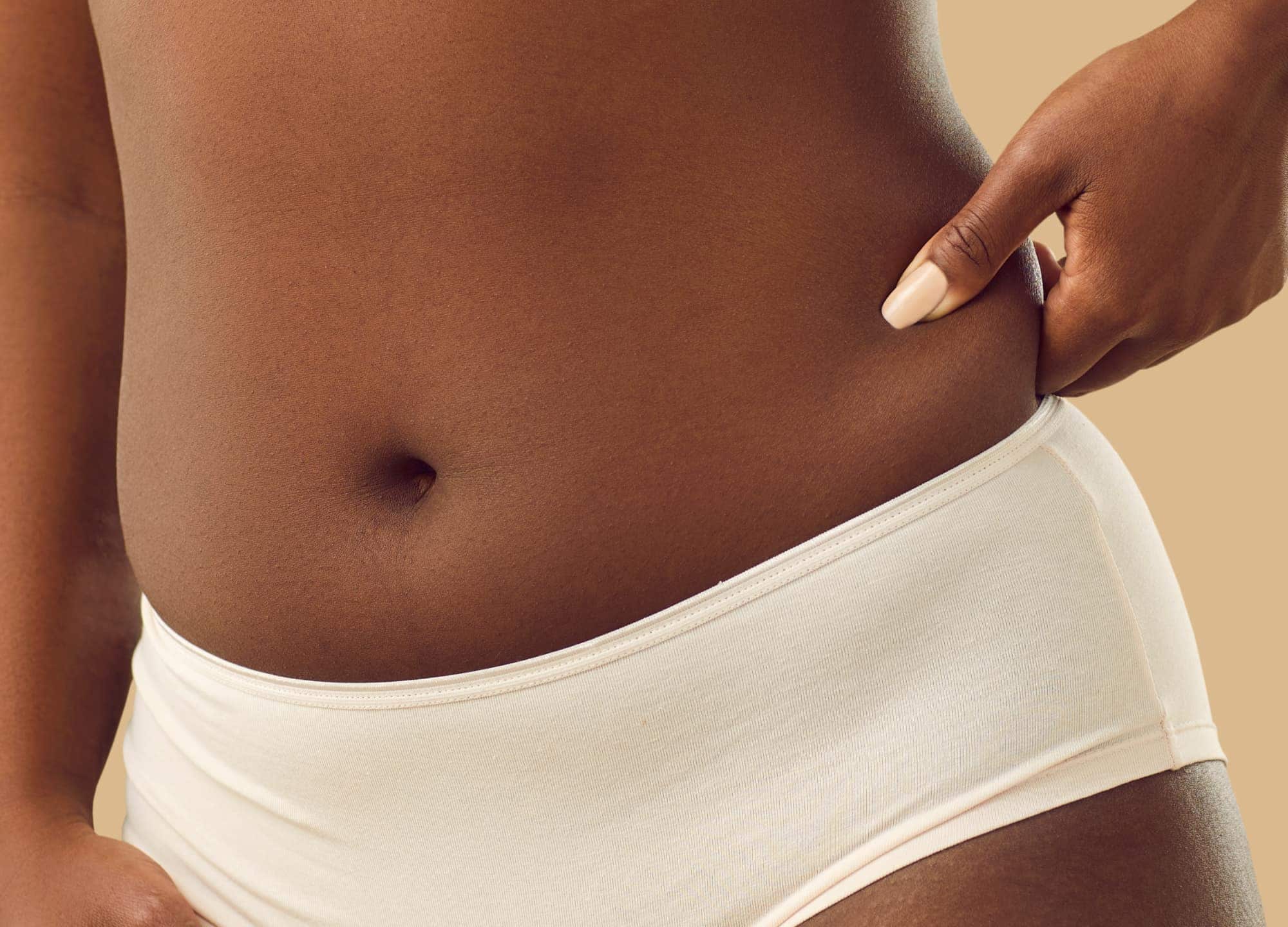Earlier this year, new data revealed that liposuction is now the most popular cosmetic procedure in the world. It’s a fan favorite among RealSelf members too, and carries an 86% Worth It Rating. Liposuction may seem fairly straightforward—if you’re boiling it down to the most basic terms, it’s simply the removal of excess fat—but it’s actually a complicated and nuanced cosmetic surgery that requires impeccable technical technique and skill combined with an artistic eye and understanding of aesthetics. When a liposuction procedure goes wrong, it can result in a number of complications and side effects, some of which can be irreversible, cautions Dr. Gary Lawton, a board-certified plastic surgeon in San Antonio, Texas.
This list includes universal surgical risks, such as infection, deep vein thrombosis, fat embolism, and anesthesia complications, but other lipo-specific aesthetic problems are also a very real possibility when the procedure is performed incorrectly. Here, some of the most common signs of a botched liposuction procedure—and the best solutions in the event of a less-than-stellar outcome.
Liposuction gone wrong: 6 signs
Irregular contours
“This is one of the most noticeable signs of poorly performed liposuction,” explains Dr. Lawton. “The treated area may appear lumpy, bumpy, or wavy rather than smooth.” The cause? Lipo that’s performed either unevenly or too aggressively, he says, adding that this is particularly problematic because it’s nearly impossible to correct these types of issues after the fact. While it can happen anywhere on the body, it’s most commonly seen on the stomach. This usually happens because liposuction wasn’t the right surgical procedure, due to preoperative looseness of the skin, Dr. Lawton says.
Dr. Amaka Nwubah, a board-certified plastic surgeon in Franklin, Tennessee, agrees. “Everyone wants to get away with liposuction, but oftentimes it’s a tummy tuck that was really needed in the first place,” she says. When someone has excess skin to begin with, simply doing lipo on the area is going to make that laxity worse and, in turn, up the likelihood of contour irregularities and indentations, she adds.
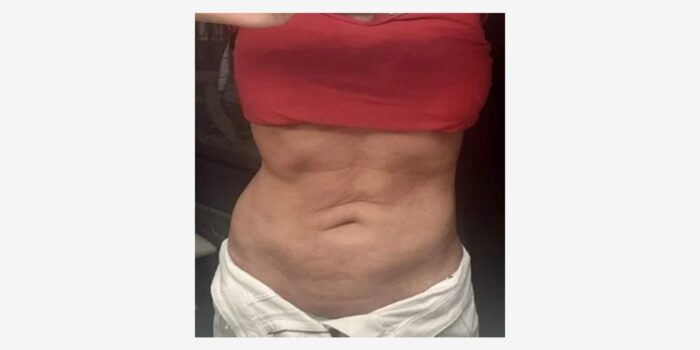
Skin irregularities
At the end of the day, liposuction should improve the look of the skin, not worsen it, says Dr. Lawton. So when the skin in the treated area is dimpled or puckering, it’s a dead giveaway that something went awry. Typically, this happens if too much fat is removed and/or if the suction is performed too superficially, he explains.
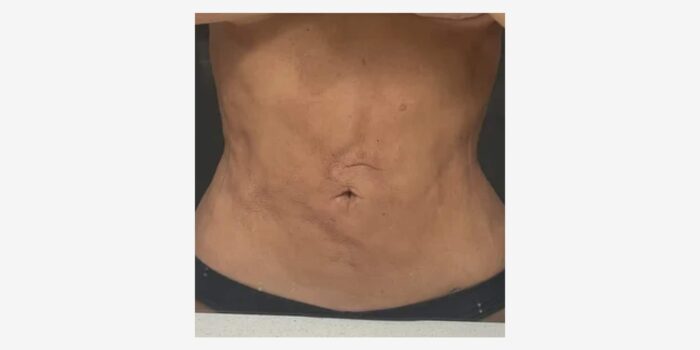
A strange-looking belly button
The appearance of the belly button is one of the easiest indicators of abdomen liposuction gone wrong. “It may be pooched out or have a donutlike appearance, with a pad of fat surrounding it,” says Dr. Nwubah. When performing liposuction on the stomach, the area around the belly button has to be addressed as well; oftentimes it isn’t, resulting in these types of deformities, she notes.

Overcorrection
Obviously, the goal of liposuction is to remove fat, but there’s a fine line between removing just enough and removing too much. And more is certainly not better in this case. Dr. George Marosan, a board-certified plastic surgeon in Bellevue, Washington, says that it’s particularly common in cases of thigh liposuction gone wrong. Not only can oversuctioning the thighs exacerbate the appearance of cellulite and dimpling, but removing too much fat along the lateral thighs in women results in a flat, masculine appearance, he says.
It can also create what Dr. Nwubah describes as a “shark bite” effect—a caved-in area flanked by two spots of protruding fat. This often happens on the inner thighs because the surgeon doesn’t account for what the legs will look like when you’re standing, she explains. “You’re lying down during surgery, so everything falls to the sides and back. This makes it easy to oversuction the middle area, especially if the surgeon doesn’t manipulate the leg properly to mimic the effects that gravity will have,” she explains.
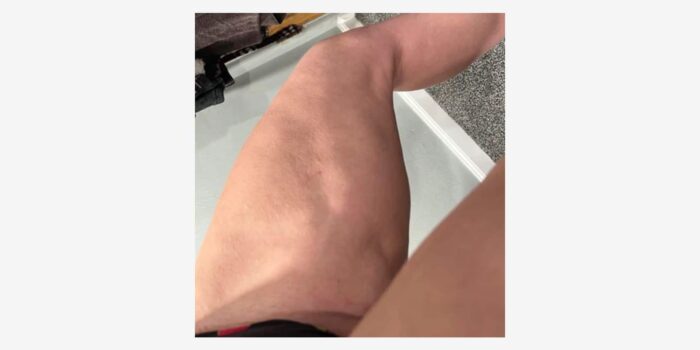
Overcorrection can happen in the buttocks too—specifically, where the buttock crease meets the upper thigh. “Removing too much fat from this so-called ‘banana roll’ area and/or liposuctioning too deep can end up causing the whole butt to droop, creating an unwanted flatness that’s especially apparent from the side,” Dr. Marosan explains. If you no longer see the crease that separates the buttocks from the thigh, you know too much fat was removed, adds Dr. Nwubah.
Bulging
Botched abdomen liposuction results can often lead to strange bulging that wasn’t there previously. According to Dr. Marosan, many surgeons are more comfortable liposuctioning the lower abdomen and not addressing the upper abs. However, both areas need to be treated in order to create definition and an aesthetically pleasing shape, he points out. This type of bulging becomes especially apparent in women with smaller breasts. “You’ll see the breast and then a bulge of fat below the breast crease that wasn’t addressed,” he says. (Larger breasts tend to hide this bulge so that it’s less noticeable.)
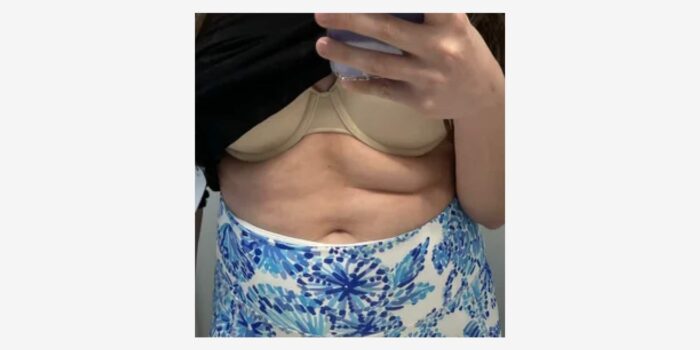
Discoloration
“Poorly performed liposuction can lead to changes in skin color, including areas that appear either lighter or darker,” says Dr. Lawton. This can be due to uneven fat removal, damage to the blood vessels, or the deposition of hemosiderin (a pigment from broken-down red blood cells) that’s released after an incision, wound, or trauma; in this case, it’s the result of inappropriately superficial liposuction. Again, it can happen anywhere but most commonly occurs on the inner thighs, he says.
Liposuction gone wrong: solutions
To put it bluntly, there’s no quick fix for any of these. Liposuction revision surgery is an option in some cases, helping to correct irregularities or contour deformities, says Dr. Lawton. “This involves removing additional fat and reshaping the treated area for an overall improved aesthetic result,” he says. The problem? Once the area has already been treated, there’s going to be scar tissue that can make the secondary treatment much more difficult, adds Dr. Marosan.
Similarly, if an area was overtreated, fat grafting to add the fat back is an option. However, not only will this involve yet another round of lipo in order to harvest fat, but there’s no guarantee as to how much of that newly placed fat will actually take and stay put. During any type of fat transfer, not all the transplanted fat cells survive—and when you’re placing them in a scarred area, the fat grafting doesn’t take as well, Dr. Marosan explains.
Skin-tightening procedures can help address saggy skin post-liposuction. “However, noninvasive techniques have limited ability to correct abnormalities caused by improperly performed liposuction,” notes Dr. Lawton, adding that correction may necessitate surgical skin excision.
At the end of the day, any kind of liposuction correction is going to be more complicated, more expensive, and likely much less successful, warns Dr. Marosan. “Once that first surgery is done, the template has forever been altered. The secondary result is never going to be as good as it could have been, because there’s always some degree of a permanent change,” Dr. Nwubah adds. Point being, it’s that much more imperative to do your due diligence in researching an experienced, skilled, board-certified provider so that you achieve the best possible result the first time around—and avoid these potential pitfalls.







